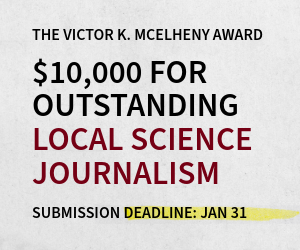On science blogs this week: In AZ & NC
LOUGHNER AND GIFFORDS AND DEATH IN TUCSON. Coming back to Tucson after the all-consuming ScienceOnline2011, I used plane time to catch up on Obama's speech and other sad events in my new home town. I moved to Tucson a few months ago and by chance was less than a block away when Jared Loughner opened fire. Less than a block away geographically, but truly far far away, basking as I was in the green and flowery splendors of Tohono Chul Park, one of Tucson's fine botanical gardens.
Colleagues and even long-unseen friends from high school got in touch, wanting to know how I was doing. How was I doing? Better to ask how the country was doing. Is doing.
Tucson is not responsible for these events. You may not know this, but Tucson is a sane and--to haul out the word so bandied about at the moment--civil outpost in the nutty state of Arizona.
If there are any consistent observations I have made about my new home, it is these two: Yes, it's sunny all the livelong day nearly every day, and people in Tucson are unvaryingly nice. A science writer is permitted to wonder whether there is a connection between those two facts.
So Tucson folks are devastated. Four enormous memorial sites have sprung up in the city, paved with candles and flowers and teddy bears and cards and notes expressing abiding sorrow.
What are we to make of what happened to those unsuspecting people gathered in the Safeway parking lot? (Safeway. Why have writers not made more of that unfitting name?) They had come to speak face to face with Gabrielle Giffords, their member of Congress, who is believed to have been Loughner's chief target. What can science tell us about the killing and maiming of 20 citizens who were giving up part of a pleasant Tucson weekend to attend to their civic responsibilities?
Is it true, as Tucson's anguished sheriff charged just after the shooting, that the political vitriol enveloping our nation figured somehow in Loughner getting his gun last fall and then buying the automatic ammunition at Wal-Mart just before he taxied to the Safeway parking lot? Some bloggers were quick to say yes. See an early post at Greg Laden's blog. At Thoughts from Kansas, Josh Rosenau was a bit more cautious.
But quite quickly the speculation about Loughner switched from hypothetical political motivation to hypothetical mental illness, in part because politicians and pundits on the right immediately slammed politicians and pundits on the left, charging that they were exploiting events in Tucson to score political points. At TheLayScientist, Martin Robbins wondered why:
What's fascinating is why his mental health was seized upon, rather than his political extremism, history of drug use, lack of involvement with social institutions, the bullying he claimed to have suffered from in school, or the alleged aggressiveness of his father.
Knight Science Journalism Tracker Paul Raeburn rounded up and disapprovingly dissected the journalistic rush to judgement, noting:
Mental illness isn’t enough to explain assassination or mass murder. And in many cases, it appears, it isn’t part of the explanation at all.
What science says is what science says so often: well, it's complicated, but none of the suggested causes can be ruled out. Maia Szalavitz sums up the several possibilities at Time's Healthland.
So far there's no evidence at all that Loughner was political in any party-partisan way (although his social network postings reveal interest in political topics. Some were far out, like the gold standard, which hasn't been much of an issue here since the 1930s.) Whereas there's lots of evidence from after-the-fact personal testimony that he was unhinged and growing more so.
And yet his target was emphatically political. Giffords had carved out a narrow victory in the November Congressional election. The campaign--I assure you as one who witnessed it first-hand--was boiling over with the aforementioned vitriol. If he was simply crazy, why did Loughner choose a polarizing political figure to assassinate? Was it just that he was looking for a high-profile target, and she made herself easily accessible as she engaged in literal retail politics, meeting one-on-one with her constituents in front of a supermarket?
The answer to that question may never be known, and of course Loughner himself may not be sure why he chose to do the particular thing he did. But it's hard to believe that the poisonous political atmosphere that surrounds us has no effect at all. At a minimum it's hard not to believe that the unhinged rhetoric gives people--including unhinged people--permission to act in ways they would normally not.
In his calming address to the nation a few days after the shooting, president Obama straddled those points. While urging us not to blame each other for what happened, he also urged more kindness and more moderate speech. Which seems to suggest that, in his heart of hearts, he thinks the vitriol played a part. Congress, partisan as it is, also cooled it consciously, even during this week's potentially rancorous effort to repeal last year's health care legislation.
Why did civility suddenly matter so much if incivility is irrelevant to the Tucson assassinations?
SCIENCEONLINE2011. If you weren't there, there are myriad ways to catch up with last week's hot ticket, ScienceOnline2011 (SciO11), held in North Carolina's Research Triangle. I had hoped to do live blogging from there, but the meeting was so packed with events that I managed only one post, on Robert Krulwich's opening keynote address. And that wasn't live.
Nearly everybody at the meeting was a writer, even the scientists, and with wi-fi ubiquitous, sharing was rampant. There were thousands of tweets, thousands and thousands. If you have the time and really truly want to catch up, find each one in reverse chronological order here.
To continue following (and contributing), the hashtag is #scio11, and the conversation rolls on and on and on even as we speak.
Webcasts of some sessions were livestreamed and eventually will be archived and available free for all at this link. I have inquired when the posting is planned, and I'll let you know when I find out.
Links to hundreds of blog posts and other writings before, during, and after the conference can be found here. Here are a couple of particularly relevant links to get you started: A Paul Raeburn post at the Knight Science Journalism Tracker; and one by Cris Russell at the Observatory, Columbia Journalism Review.
I may have failed as a live-blogger, but I took notes. So here are a couple snapshots.
GOING HOLLYWOOD. If I have a complaint about #SciO11, it's that the sessions were only an hour long, and in nearly all cases I wanted to know more, much more. But Carin Bondar and Joanne Manaster crammed an amazing amount of advice into their brief session on producing short videos.
The advice ranged from story ("I can't stress enough how important that is") to writing ("Watch for wordiness") to shooting ("Filming a shot several times is never a bad idea") to search engine optimization so people find your video on YouTube ("Use tools like Google Adwords") to buying a camera ("Go for HD, and make sure it has a plugin for a mike") to lighting ("Don't mix natural and fluorescent light") to what to wear ("Royal blue and turquoise are always good") to makeup ("Women, use about 10% more than usual") to where to find help ("Use the 'Net.")
Manaster has posted her PowerPoint presentation here.
OUR BRIGHT ENERGY FUTURE: One of the shuttle buses between the hotel and session venues was a local operation, Greenway Transit of Durham, NC. The bus ran on biodiesel fuel confected from discarded vegetable oil collected from local restaurants. The driver described the recovery process, noting that it was quite dirty. "Biodiesel," he said, "is a pain in the ass."
WHITHER E-BOOKS? Carl Zimmer's Brain Cuttings, a collection of his Discover columns, was just published in e-book form only. (A free sample is available at the same link.) Published as an experiment, Zimmer says, this is your plain-vanilla e-book. It's text only, although he did have design help with the layout and a striking "cover."
But at the session on e-books, other models also were on show. Some go way beyond a lone writer getting a bit of help from designers but bypassing the publishing industry altogether, like Brain Cuttings.
David Dobbs wants the book he's working on to be available in several forms, ranging from a conventional hardcover to a far more elaborate (and presumably more expensive) digital package. That would be an e-book that includes apps illustrating technical aspects of the research the book is describing--fun apps that seem to me more like gaming than reading. It will involve working with programmers and other tech types--collaborators he found through Twitter. But that process needn't interfere with actually writing the book, Dobbs said, because it can be postponed until the manuscript is completed and in the 6-month pre-publication pipeline.
These ideas leave open this crucial question: What exactly is the right business model for e-books? Librarian John Dupuis suggested that it might be something like the music industry. Tom Levenson said it was more like the early movie industry. Zimmer proposed that e-books might turn out to be like the group effort that is textbook publishing. None of these is particularly cheering news for a formerly solitary writer whose province is words, not graphics or music or programming--or collaboration.




